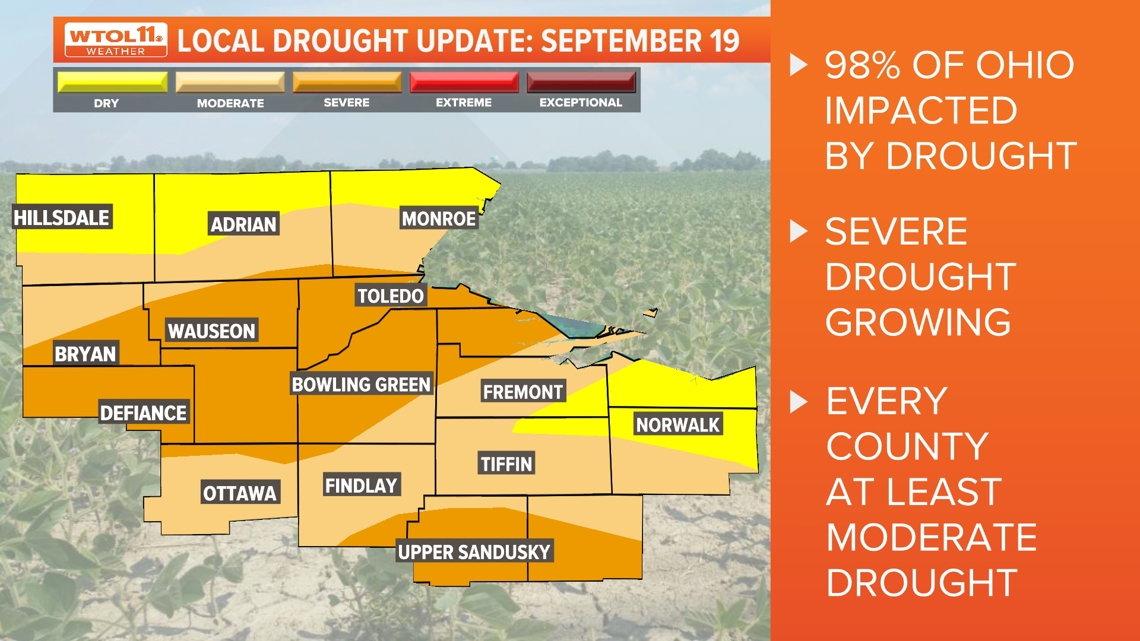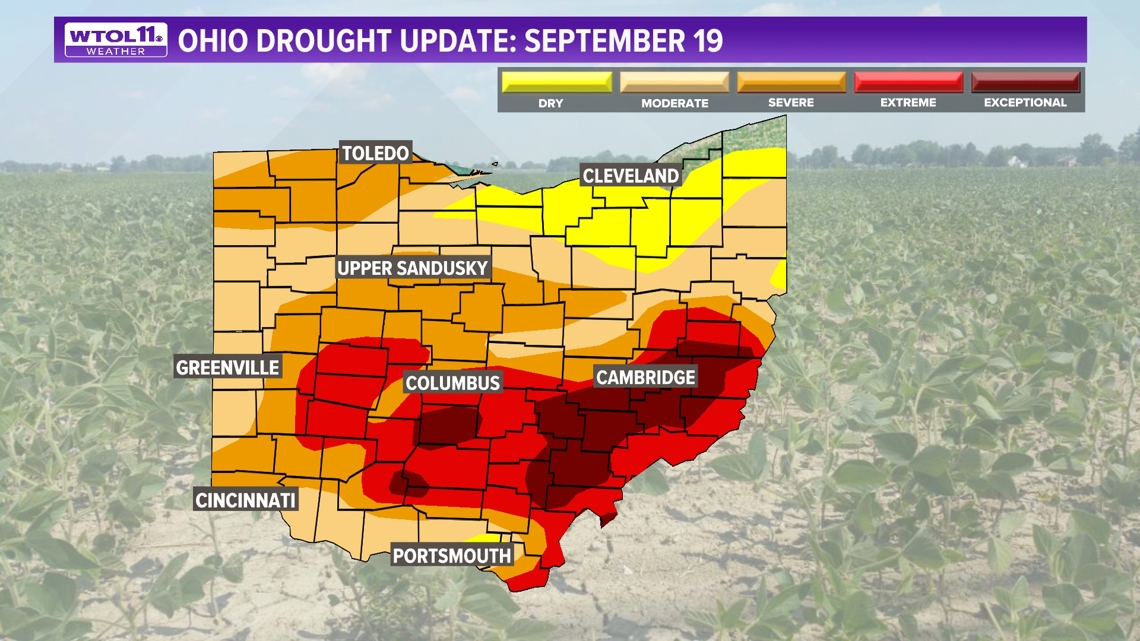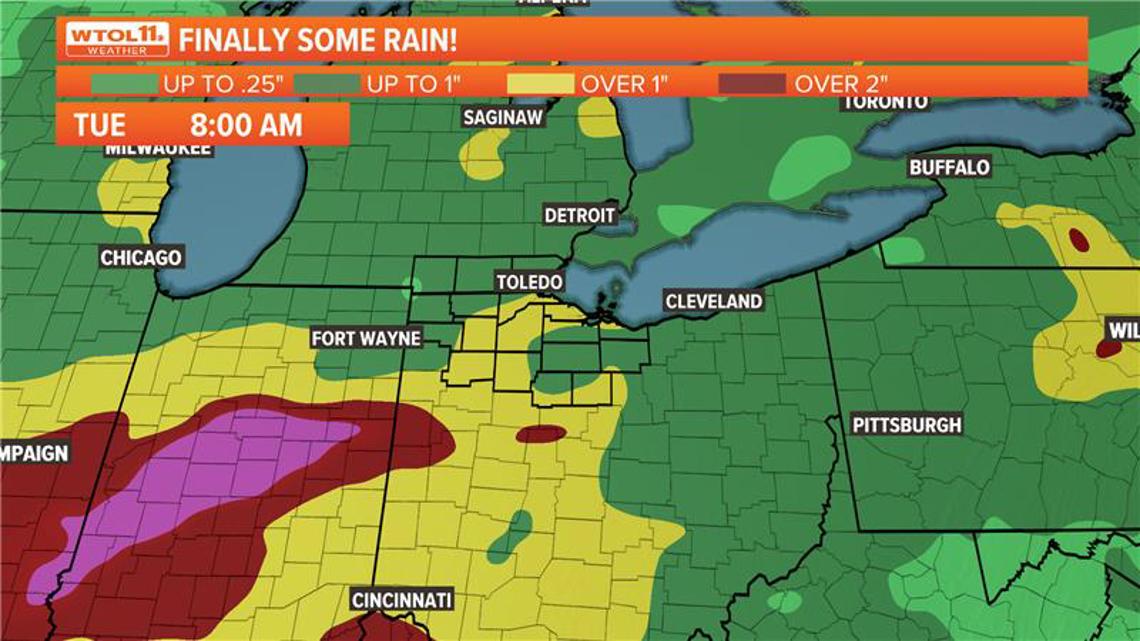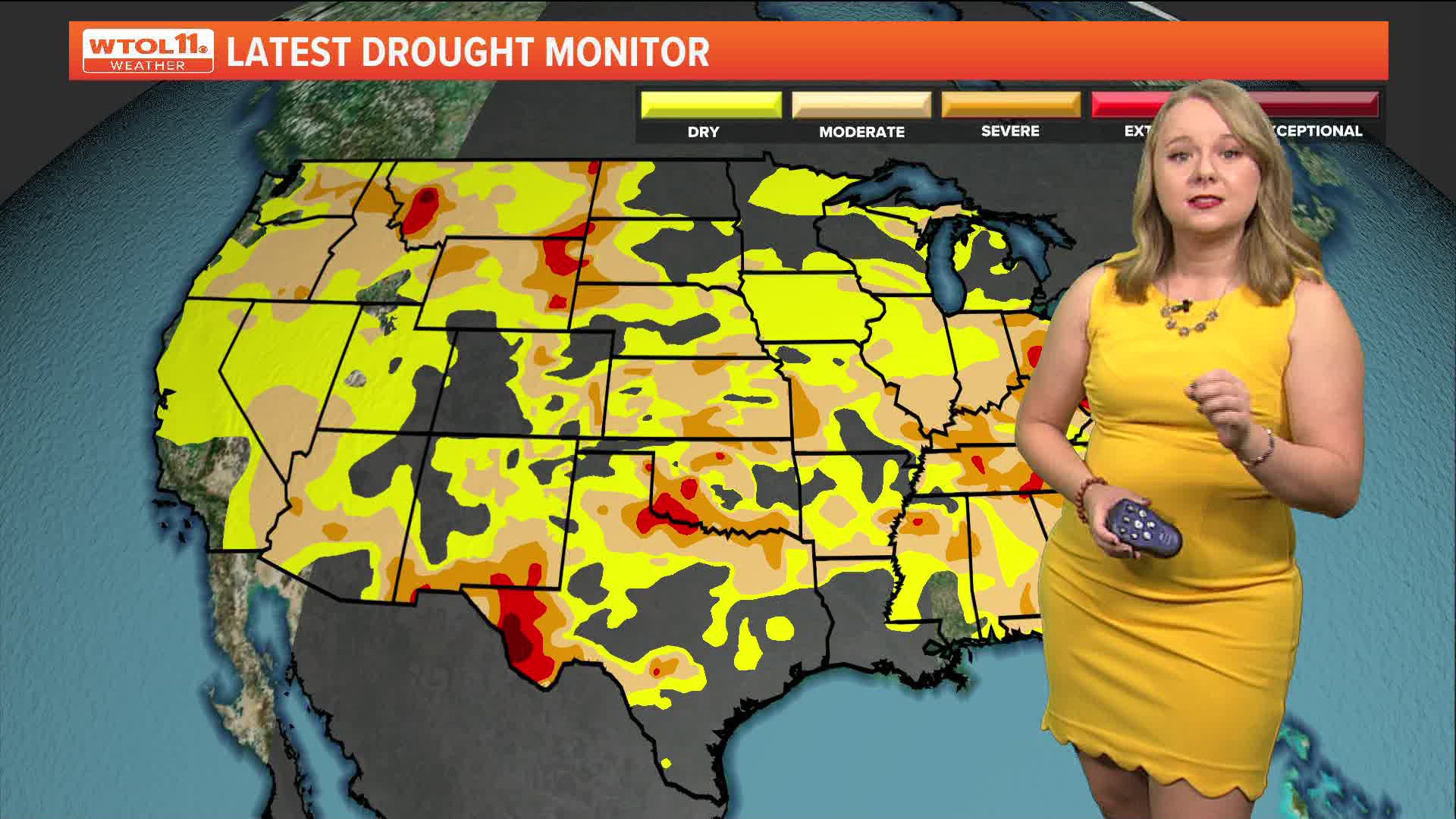TOLEDO, Ohio — Severe drought has expanded across northwest Ohio this week due to abnormally dry September weather. Though the dry weather pattern may finally change next week, this welcome return of rainfall may be too late for many area farmers.
With autumn just a few days away, Meteorologist John Burchfield breaks down the data behind the final drought outlook of the summer season.
Drought in northwest Ohio
On Thursday, the final drought monitor of summer was released by the National Drought Mitigation Center, USDA, and NOAA. As expected, this new data showed an uptick in drought severity and coverage across Ohio and Michigan. With drought conditions expanding into southeast Michigan and the lakeshore, every single local county is now experiencing a moderate drought or worse.
Just a week ago, several counties, including Erie and Huron were not officially considered to be in a drought. Now, 87 of Ohio’s 88 counties are feeling the effects of this dry September weather, representing a population of approximately 11.5 million. Lake County in far northeastern Ohio is the lone exception, likely due to its proximity to the water and thus more cloud cover and lake-enhanced showers.
So how has the drought changed across Ohio in the past week? It’s gone from bad to worse due to a total absence of rainfall. As of Thursday evening, Toledo has only received 0.24 inches of rain in September, 1.64 inches below average.


Conditions across Ohio
Cleveland has picked up over an inch this month but is still 1.24 inches below average. Akron has received a paltry 0.33 inches of September rainfall, coming in at 1.90 inches less than usual. In central Ohio, the drought has hit even harder. Columbus has only gotten 0.08 inches of rainfall this month, almost two inches below average.
Cincinnati has received even less rainfall, and with just 0.07 inches, is now in a 1.90 inch deficit this month alone. Most notably, Dayton has yet to receive any measurable rainfall this month. Normally, Dayton receives 2.11 inches of September rainfall through today’s date. Much of central and southeastern Ohio continues to feel the effects of extreme and exceptional drought.


Based on this week’s drought data, 97.92% of Ohio is experiencing dry or drought conditions. This number is up from 95.43% last week. 87.45% of Ohioans are feeling a moderate drought or worse. 59.46% of Ohio including all of Lucas County is under a severe drought. Over 30% of the Buckeye State meets the classifications of an extreme drought. Lastly, 9.52% of Ohio is under the highest level of exceptional drought. This number is up from 8.41% last week.


How has Michigan fared during this September drought? Only about half of Michigan is abnormally dry with just 10% experiencing drought. Most of this Michigan drought is occurring right along the Ohio state line or in the Upper Peninsula. If you’re curious about the tangible impacts of any of these drought classifications, check out Meteorologist John Burchfield’s explanation in last week’s Climate Friday episode here.
Looking ahead (and forward) to rain
So where do we go from here? The hot and dry weather will continue into the start of the weekend and likely the first day of fall Sunday. After that, some much-needed rainfall will return to the region early next week. The WTOL 11 Weather Team is finally forecasting some rain chances ahead, which will likely amount to close to an inch between Monday, Tuesday and Wednesday.


With the growing season almost over, this rain may be a day late and a dollar short, and many area crops have already been stifled by the heat and drought. While those with dry lawns may be grateful to turn off the sprinklers for a few days, many grassy areas that are brown and dormant will likely stay that way for the rest of the season. Ultimately, time will tell how this September drought will impact area farmers as the fall harvest begins soon.
Stay tuned for next week as Meteorologist John Burchfield shares the first Climate Friday of fall!
WATCH MORE FROM CLIMATE FRIDAY

